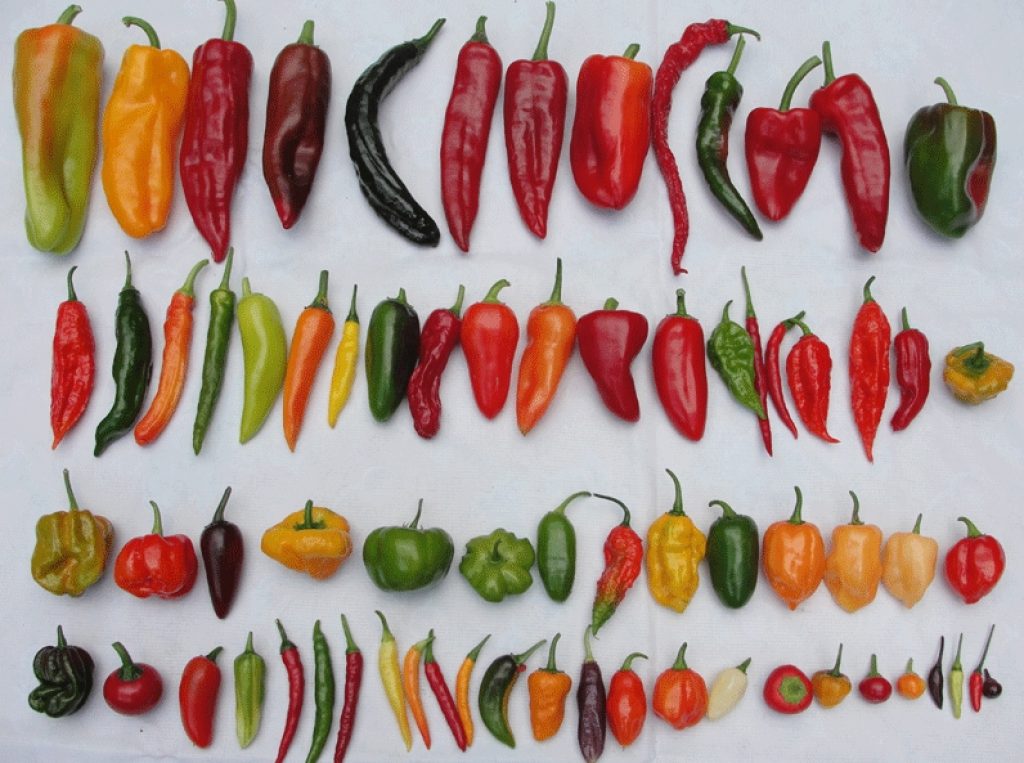Chili peppers (hot pepper, chile, chile pepper, chilli pepper, or chilli) refer to several cultivars of Capsicum species whose fruits (berries) serve as a spice in culinary to add heat or pungency to various dishes. They belong to the nightshade’s family Solanaceae, are native to Mexico, and their leaves are also edible.
The heat or piquancy in chilies results from capsaicin, a capsaicinoid compound. Upon coming in contact with a human or mammal’s mucous membrane and sensitive skin areas, including eyes, causes a burning sensation.

If you love chilies, it’s worthwhile ensuring that your cat doesn’t eat them or any food that has chilies, i.e., cats shouldn’t eat chilies including cayenne or jalapeño whether raw, dry, in powdered form, or any other product that has hot pepper or chilies including hot sauces or curries.
Therefore, any of the cultivars of the C. annuum, C. baccatum, C. chinense, C. pubescens, and C. frutescens, which has capsaicin, are a big no for cats, whether green pepper, red, yellow, orange, or purple.
The only safe pepper that your cat may eat is the bell pepper, also known as sweet pepper, or capsicum as it has zero heat.
Why are chilies bad for cats?
While you may find them tasty and delicious, hot peppers are not good for your kitty, which applies to any other spicy foods. Only tree shrews and humans find spicy foods appealing.
Firstly, chilies will cause stomach distress that may result in diarrhea or even vomiting. Also, since it irritates their mucous membrane, it will pain, salivation (drooling), runny nose, or teary eyes.
Secondly, cats don’t like the smell or taste of hot pepper, a reason why you will find many homemade feline repellents having chilies like cayenne, poblano, habanero, jalapeños peppers. It is a big turn-off.
While a minimal amount may not cause detrimental problems, we don’t see the need to give your pets something they don’t like. Therefore, avoid giving your cat the following dishes and they have chilies:
- Arrabbiata sauce
- Puttanesca
- Paprikash
- Curry
- Jambalaya
- Jerk Chicken (Caribbean)
- Mole poblano
- Nduja (Italian)
- Tavuk Kebab
- Som tam
- Chiles Rellenos
- Mole sauce
- Salsas
The list of foods is not exhaustive and will include any of your homemade, store or restaurant bought foods with chilies or any spice that has capsaicin.
keep spicy and hot foods away
While they don’t like chilies, cats can beg for the spicy hot food you are eating even though it will cause them undesirable effects and pain. If you see them begging for a bit, most likely, it is the texture and aroma the food has and not the hot pepper.
Instead, consider other healthy treats, including safe fruits and vegetables like bananas, green beans, peas, sweet potatoes, watermelons, cantaloupe, blueberries, pumpkins, cranberries, mangoes, broccoli, carrots, cucumber, zucchinis, among others.
